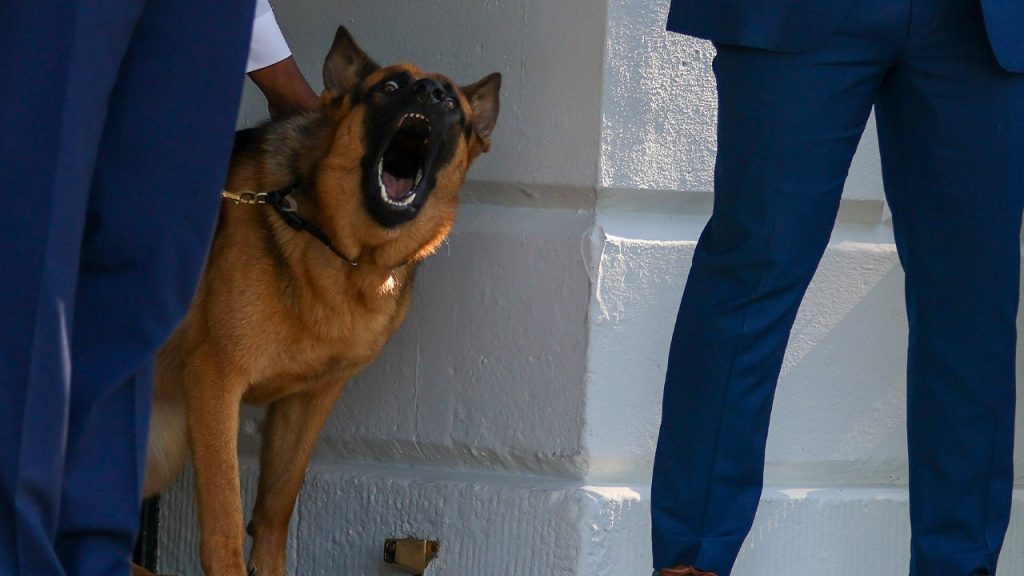President Biden’s dog, Commander, reportedly attacked U.S. Secret Service personnel multiple times, with newly released records showing incidents of aggression and violence towards the security team. The attacks occurred while Biden was walking the dog, with the president witnessing the incidents firsthand. Some USSS personnel suggested the purchase of a muzzle for the German Shepherd due to concerns about its behavior towards staff members.
Email correspondence obtained by Judicial Watch detailed some of the incidents involving Commander and the Secret Service personnel. One agent shared that he was bitten by the dog during an evening walk with Biden in the Kennedy Garden. The agent described the dog biting his arm through his jacket, causing damage to his suit coat but not breaking the skin. Other emails from staff members expressed concern about the dog’s behavior and suggested ways to prevent further attacks.
The emails also revealed that another Secret Service officer was bitten by Commander, prompting medical treatment but no hospitalization was required. Reports of additional bites on a female USSS officer also emerged, raising concerns about the dog’s aggressive behavior towards the security team. Commander’s biting incidents took place in various locations, including the White House, Wilmington, Camp David, and Biden’s beach house in Delaware.
The aggressive behavior of Commander mirrored that of the Biden family’s previous dog, Major, who was also known to bite Secret Service and White House staff members. Commander eventually left the White House to live with other family members after the series of attacks raised concerns about the safety of personnel. Fox News Digital reached out to the Office of the First Lady for comment on the incidents, but there has been no response regarding the aggressive behavior of the Biden family’s German Shepherd.
The reports of Commander’s attacks on Secret Service personnel shed light on the challenges faced by the security team in ensuring the safety of the President and his family. The incidents involving Commander and other family pets, like Major, highlighted the importance of properly training and managing pets in high-security environments such as the White House. The concerns raised by USSS personnel regarding the need for a muzzle for Commander underscored the seriousness of the situation and the potential risks posed by the dog’s behavior.
While the incidents involving Commander may have raised alarm within the Secret Service, it also highlighted the complexities of balancing the needs and safety of the First Family with the responsibilities of the security personnel. The decision to have Commander leave the White House and live with other family members was likely made to prevent further harm to USSS personnel and ensure the safety of everyone involved. The release of the records detailing the dog’s attacks on Secret Service members served as a reminder of the challenges and risks associated with maintaining security in high-profile environments.


